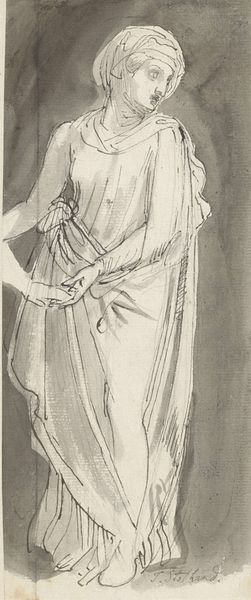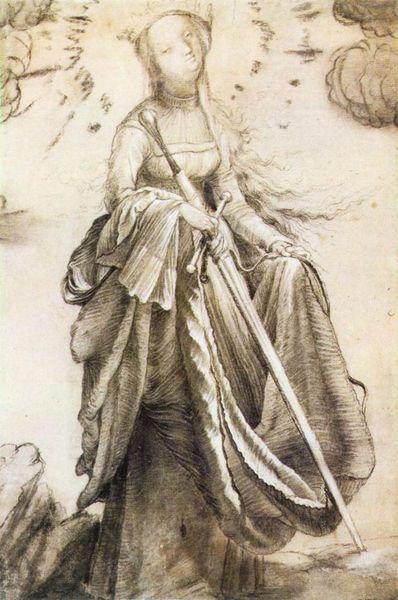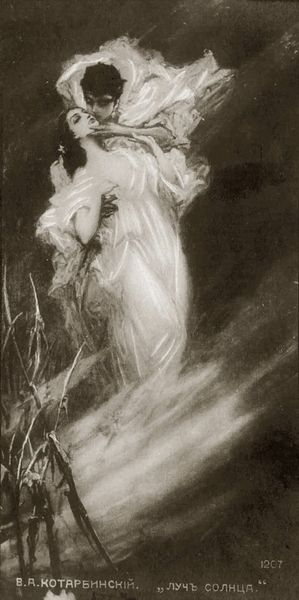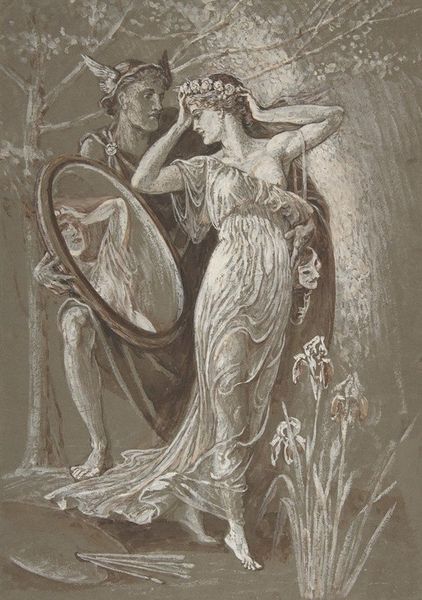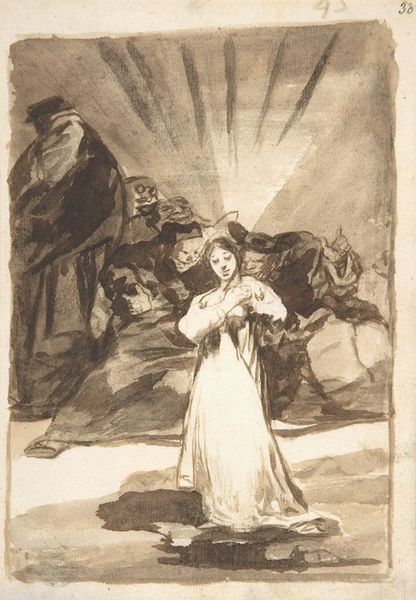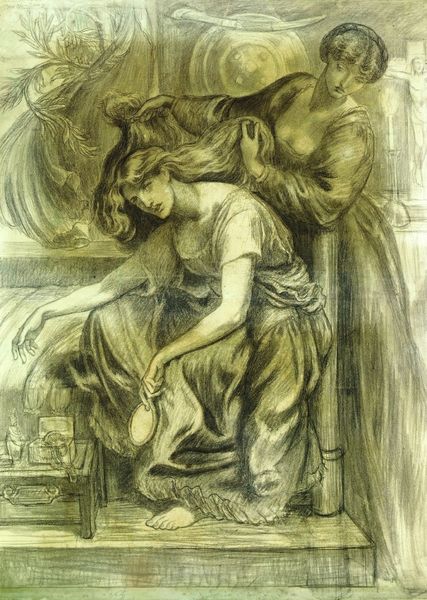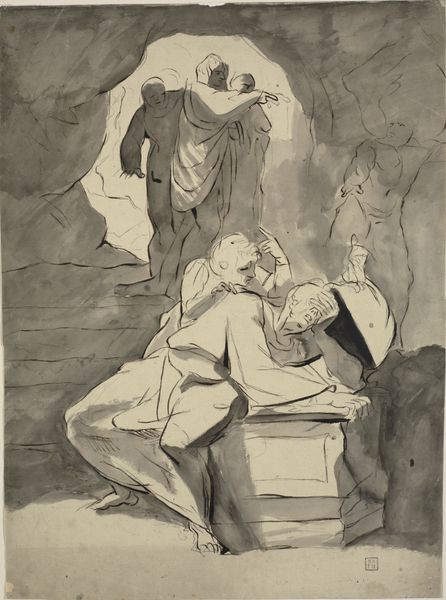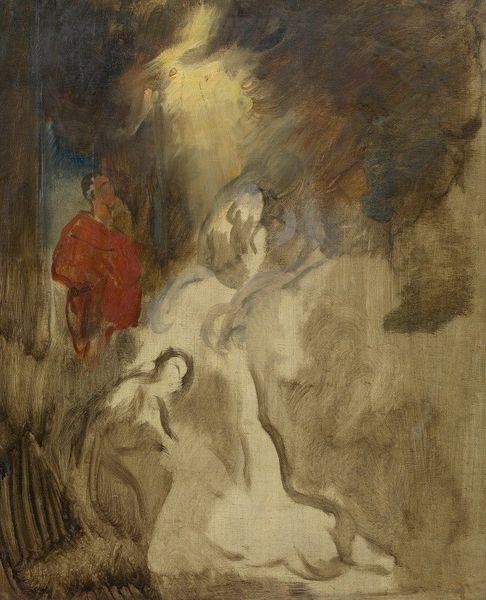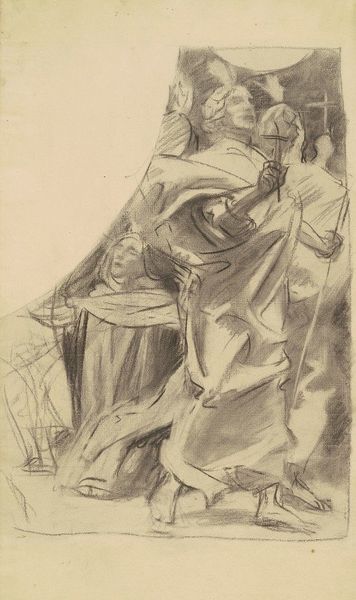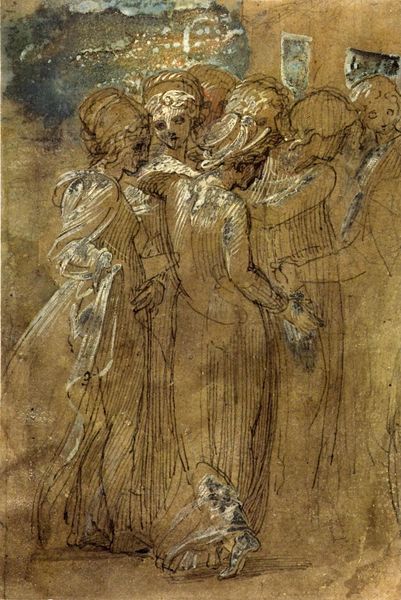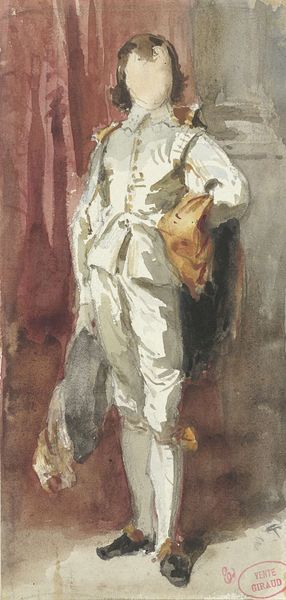
Dimensions: 278 mm (height) x 188 mm (width) (bladmaal)
Curator: The watercolor and charcoal drawing “To kvinder paa gaden,” or “Two Women on the Street,” by Constantin Guys, from between 1802 and 1892, presents us with an intriguing slice of street life. Editor: It certainly does have that snapshot quality, doesn’t it? There’s a casualness, a quickness, to the rendering. I notice the lines are quite fluid and confident, almost as if the artist was capturing a fleeting moment, maybe a glimpse into the labor force during those times? Curator: Exactly! And while it appears effortless, there's a considered understanding of social dynamics at play. The women, cloaked and hooded, suggest a need for anonymity. Were they concealing their identities due to societal constraints or perhaps engaging in some form of labor that was not readily accepted or was frowned upon? How were they negotiating public spaces? Editor: It’s interesting to consider the garments and the specific weight and feel they must’ve had on those women during this historical moment. You know, when we analyze garments, we're talking about textiles, the labor that goes into creating textiles, their social circulation. I see these coverings as crucial for understanding the intersection of materiality and daily female existence at the time. Curator: I think you're right to consider materiality; even the monochromatic watercolor wash gives the image a muted, almost melancholic tone, suggestive of the potential hardships that women of the era often faced as they walked the streets. This visual quiet reinforces the reality of their social positioning in that era, both powerful and precarious. Editor: It makes you consider the economic and practical considerations of dress at the time. And looking at how confidently the artist captured this moment of genre painting—there's a level of production we also have to keep in mind, since Constantin Guys made more than 2,200 drawings like these. What was the labor like to create these snapshots in such prolific manner? Curator: Indeed, both the labor depicted within the image and the artistic production required to create it. The layered meanings provide valuable insight, and it serves as a reminder of art’s capacity to encourage meaningful discussion about gender, class, and labor. Editor: Absolutely. Bringing a lens to the methods and social life inherent in a seemingly simple work reveals just how complex and compelling these pieces can be.
Comments
No comments
Be the first to comment and join the conversation on the ultimate creative platform.
